
03-05-2021 - Case Study, Gear
John Lindley, ASC Exposes the Law in “Your Honor”
By: Suzanne Lezotte
In Part II of a series of interviews with the cinematographers behind Showtime’s newest offering, “Your Honor,” John Lindley, ASC, takes the helm for three episodes following James Friend, ASC, https://sonycine.com/articles/james-friend--asc--bsc-lights-the-shadow-of-doubt-in--your-honor-/. Known for his groundbreaking work on “Pleasantville,” (what became the first major Hollywood movie to go through a full Digital Intermediate in a stunning visual weave of color and black and white) for which he garnered a CamerImage nomination, Lindley was nominated for two ASC Awards, for “Pan Am” and won for “Manhattan.” The third cinematographer on “Your Honor,” Richard Rutkowski, ASC, had taken over for Lindley after he shot the pilot for “Manhattan.” They both also worked on the show “Castlerock,” “so we know each other,” he laughed. Lindley is currently working on “The Woman in the House” for Netflix.

All unit photography courtesy Skip Bolen
Tasked with coming on board a show in which the visual tone had already been set, “the challenge of the work is to somehow make it your own but also beautify it,” he noted. Prior to the show, Lindley had used the Sony VENICE on “Castlerock,” but had been an early adopter when it first came out. “When there were a few floating around, I secured one from Rob Keslow and used it on commercials.” Noting that he likes trying new technology, “the chip has all this color architecture buried in the sensor that offers a look I find pleasing.” Given the sensitivity of the chip, “you can get these edge lights you don’t have time to set; a porch light across the street can be seen. Little bits of lost art can wander into the frame because these chips are so sensitive,” he explained.
Given the timing of when he came on board, Lindley considered the LUTs that were in place, “but if I was at a location they had used, for instance the courtroom, I would look at what they had done in the past, and make it my own. I embrace inconsistency, and James’ LUTs were great, but I made my own,” he said. He admitted that, “Even in one that was my own, I changed mine. I tried to undo them and redo them often, because I think it’s good to stimulate your eye.”
Since New Orleans is like a sub-character in the show, Lindley was happy to embrace that. “For me, it’s exciting when you are in the location where the show takes place. You have the advantage of being able to weave it into the look. New Orleans is so photogenic, and location-rich, which makes it hard, because you have to decide which one you like the most.” He explained how it wasn’t always that way. “I was struck by the big breakthrough in the film industry, when equipment became small enough to leave the studios and take on location. At the time, it was so liberating to directors and DPs, and now we’ve turned it on its head. Ever since the tax incentive took over the industry, we go to places that are locations but they are not where the show takes place, so you have to eliminate the palm trees, and landmarks, etc.” For Lindley, it was refreshing to be in the actual location city of New Orleans, which brings a color schematic that evokes “tropical paint colors in the exterior of the houses.”
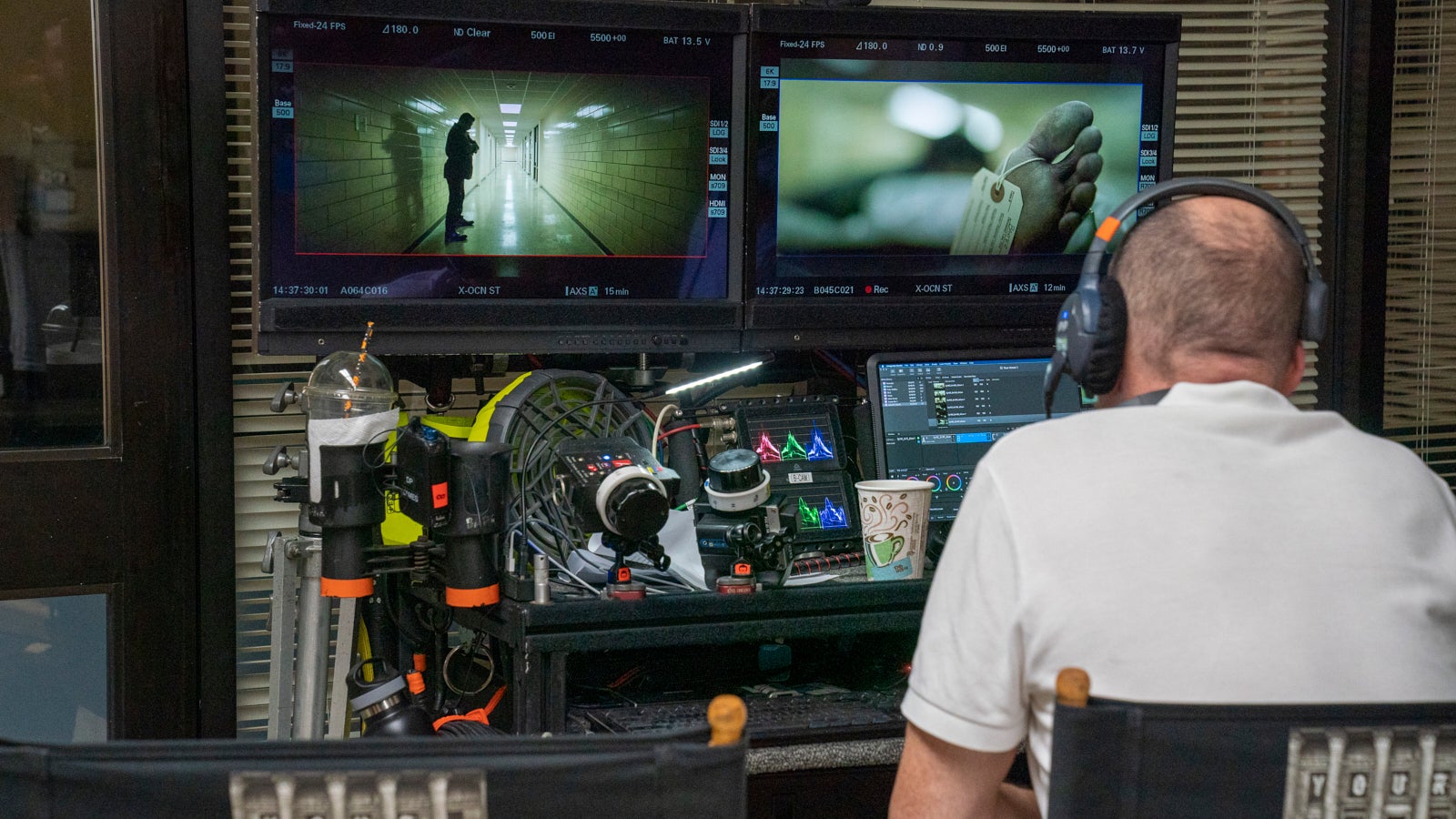
Fluorescent look in camera at the morgue
As the bodies pile up in this drama, another location is the morgue, which was built as a set within an existing building. “I lit it with fluorescents, and when I did the post work I made sure I retained the colors I wanted in the first place. We had a really good designer on the show, not only for shapes but also for colors, monochromatic. My practicals are RGBW LEDS, so I can match and mismatch any color on the set pretty quickly.”
As the story unfolds, and lie begets lie, a dinner scene takes place in the kitchen of Judge Desiato’s home, utilizing multiple angles and lighting transitions as the evening progresses. Lindley explains, “Dining scenes are always appealing. It’s supposed to be a convivial warm friendly scene and then it starts to go a little south as others arrive.” Because different people know different bits of information, the audience is left wondering if two pieces of information are going to intersect, which, if all of it is put together, would be the end of the main character. “That scene builds the tension. As people are shelling shrimp, it gets a little more loaded, and he sees the dog messing with the bloody rag. It’s a happy and scary scene at the same time. I have a nice warm light over the table and let things fall off all over the house.” The house and porch are all built on a stage, but when Desiato transitions to the porch to speak to his son, “I played it much colder and darker, and used light as if lit from inside.”
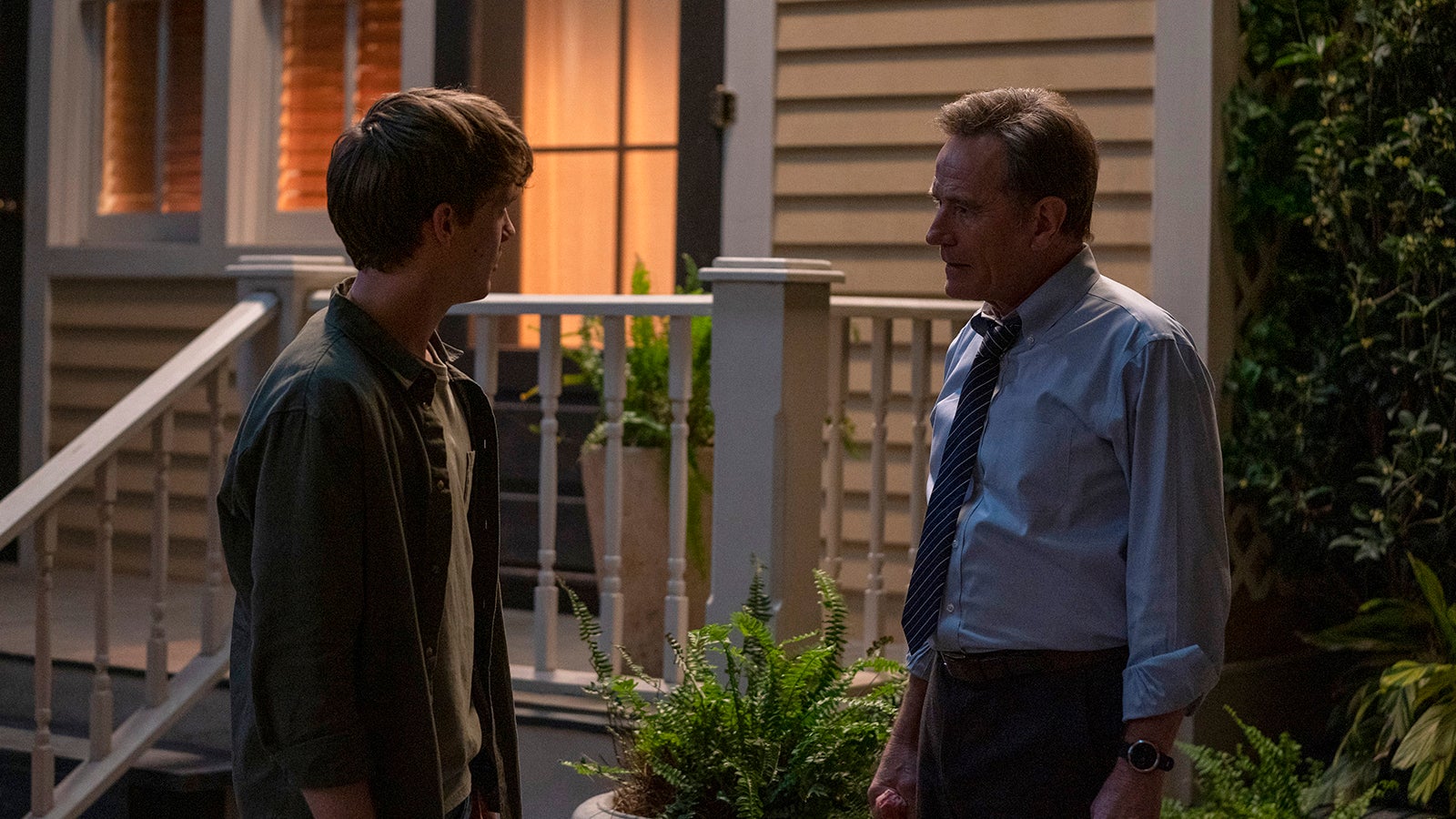
Desiato and son speak
The story intrigue continues as conversations are held, and Judge Desiato meets with his friend and a potential political candidate at a local barbershop. “It’s a real barbershop, and it’s hard to see in that room, but I love that back room. There is a window and a transom over the door that’s lighting the whole space. I hung a couple of lights in the ceiling of that room to get the window light to extend inward. I used lights outside on the street, but it was more a case of turning lights off than turning lights on. If I could see them, or sometimes even if I couldn’t, I would turn them off,” he said. Lindley paused for a moment to explain that when shooting with digital cameras, “one of the funny things about these cameras is they are so responsive that our new job is un-lighting. Whatever windows I didn’t see in the show I tried to black out. It’s a big a part of the job these days. A small amount of light can come out of nowhere and upend your plans, so you have to play a lot of defense.”
Lindley extolled praise for Friend’s work on the show, and director Edward Berger, in the careful use of vertical lines. “They often started with vertical lines and then worked the rest of the frame into that. I really admired that and wanted to continue, so I looked for the vertical lines, to strengthen that aesthetic.” For one scene in a bank, when Judge Desiato is trying to withdraw money, “we found a location that had been a bank in the past, but was no longer in use,” Lindley explained. “Only the counters remained, so we built cubicles and kind of cheated the cubicle, so as Bryan waited in the chair, behind him you could see the length of the bank. I thought the bank had really strong, good lines.”
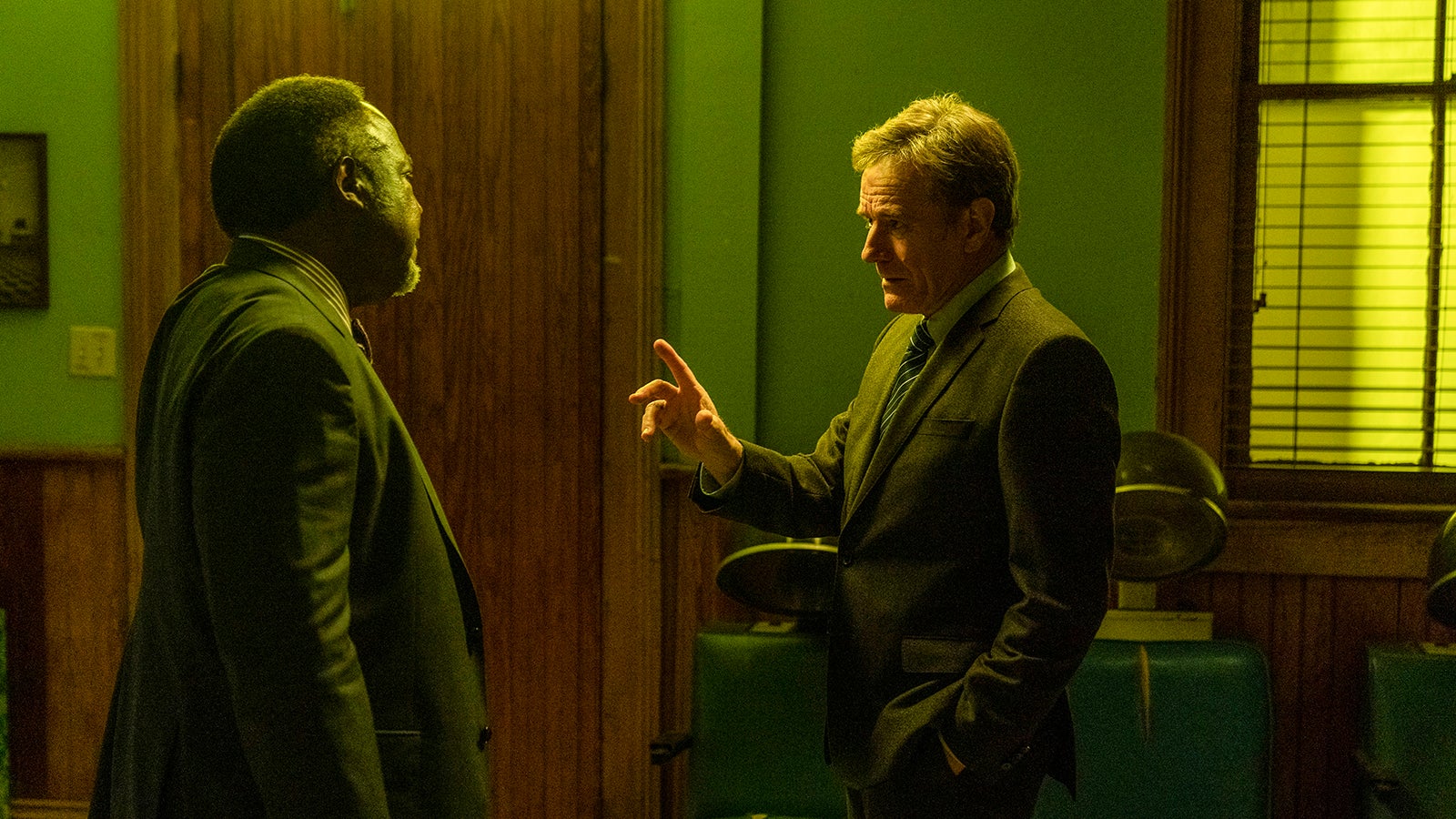
Judge Desiato meets with potential political candidate
With respect to a New Orleans tradition, Red Dress Day, Judge Desiato gets caught in the middle of a crowd celebrating on Bourbon Street. “It’s not an invention of the show, there really is a Red Dress Day,” he said. “Everyone wears a red dress, and it seems to be a very appealing and successful combination.” The idea was to recreate that but, “shooting in the French quarter, it’s like trying to shoot in Times Square. You don’t just get to take it over, it’s a full-time business of it’s own.” Desiato drives there, and is forced to exit his car and walk. “We needed far more space than was allowed. The shot I really liked was the overhead, where you see him in a crowd of red. Then he drops his phone, as he’s trying to connect with the person demanding the money. We shot that scene at 500 ASA.” Given that they were shooting outside, the use of internal NDs was critical for speed. “Having internal NDs just makes everything faster. If it’s a partly cloudy day and the sun is in and out, it’s so much faster to change an internal filter as compared to a 4x5 filter. Plus, every now and then I change my mind at the last second, before the camera is rolling, and I can change the filter really quickly.”
The Sony Rialto was used on another pivotal scene where Judge Desiato, who has just purchased a boat to appease a blackmailer, is forced to dump his body from the boat. “I used the Rialto on the scene with the boat. Everything on that is shot with the Rialto. I love holding that thing in my hand. You can put it anywhere. It’s so freeing,” he said. The fishing boat is quite small, made of fiberglass, “so it’s not like you can move anything out of the way. “Having a camera that you can fit into a tight spot, solves the problem of how to get the right shot.”

The warehouse location
One of the most ominous scenes takes place in a warehouse, whose location is a boat repair warehouse, “so it’s pretty bright,” explained Lindley. “My show was the first to use it, then Richard Rutkowski was going to be in there a lot. The actual place is lit with a lot of skylights which we had to cover up, but once we got control of the light, it’s pretty dark in there.” Lindley explained that he used welders’ screens with apricot-looking gels, “not quite sodium vapor, but I ended up thinking it looked good. It created a weird orange light that comes through the windows, then, obviously, when the door opens, a stream of light is let in.”
Scenes that included the character Jimmy Baxter took place in a hotel that he owned, which was really two hotel locations: one is the exterior and the lobby, and the other is used to shoot scenes that take place in the restaurant and the actual hotel. “I always saw Baxter as some sort of royalty, and that his rooms should look palatial, and his desk his throne. That was the structure of the lighting, making him seem as if he were the king at the center,” said Lindley.
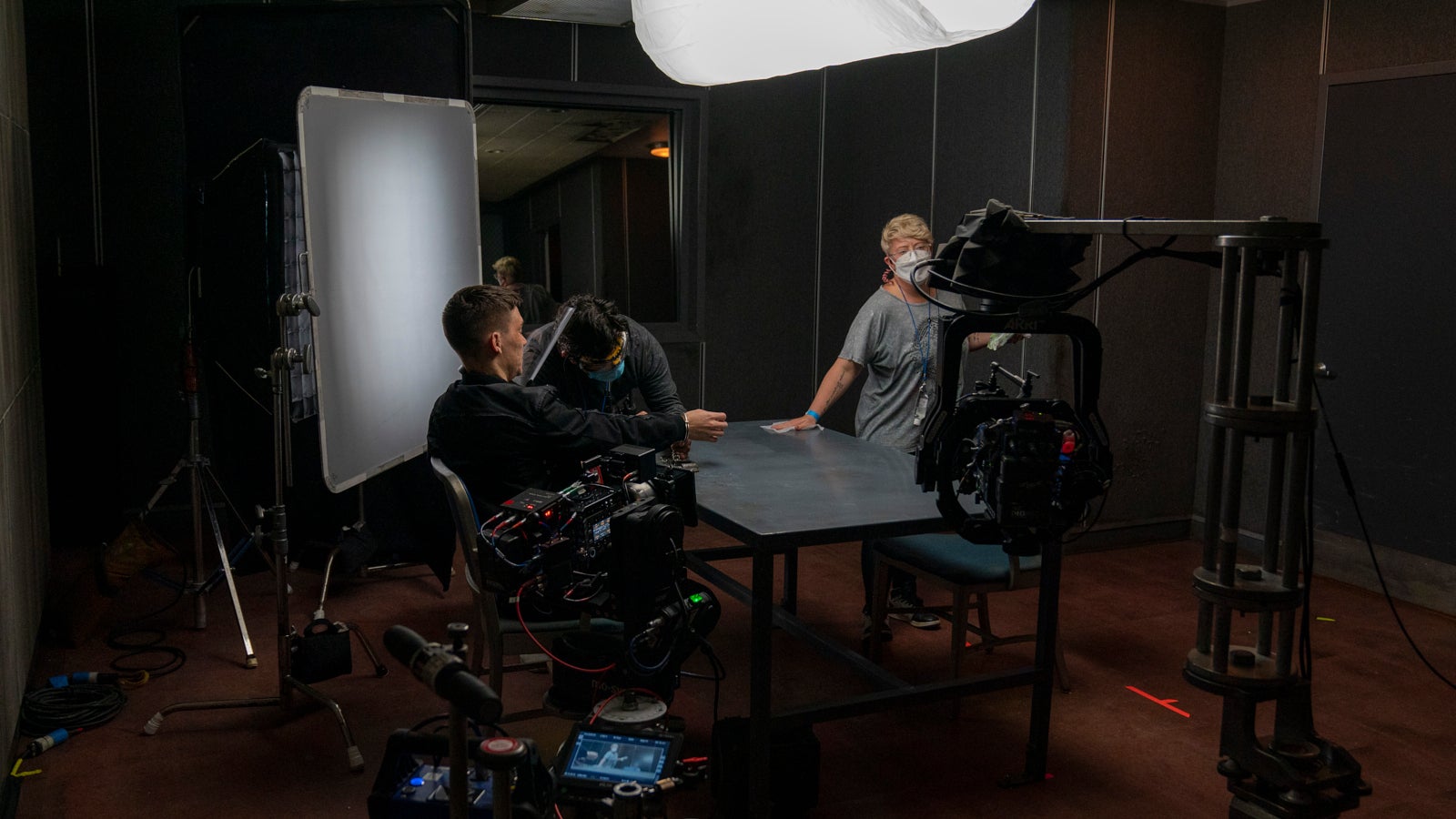
Interrogation
Despite the fact that the show portrays class warfare, and pits rival gangs against each other, there wasn’t any issue of skin tones for Lindley. “The Sony VENICE is so sensitive, but it undersells it in some way. I feel like the camera has more range than I’m told it has. I’m often surprised it sees into shadows that were beyond its contrast range, or highlights. Some people have more tone or angular features, but on ‘Your Honor,’ I didn’t feel the obligation to light for it. I try to light an environment, not just a face, and that was a little more fun.”
Lindley explained that “I’m pretty fearless with the exposure index (EI); if I see natural low light that I really love, I adjust the EI to that.” He pointed out that, “I never had a director or producer ask me if it’s too dark. They are very discerning people, not micro-managers.” Lindley worked with the original operator, Danny Bishop, who did terrific work, and when he went back home to England, Lindley brought his own camera operator, Lawrence Karman, to the show, but both of them had worked with the director before. “The team is really terrific. The production crew was a really great group of people to work with.”
Lindley’s work on “Your Honor” has led to friends from his past to reach out to him about the show. “It’s an interesting theory, the premise of the show: You make one mistake and everything compounds. I felt fortunate to work on ‘Your Honor.’”

Chat on the back steps

The courtroom
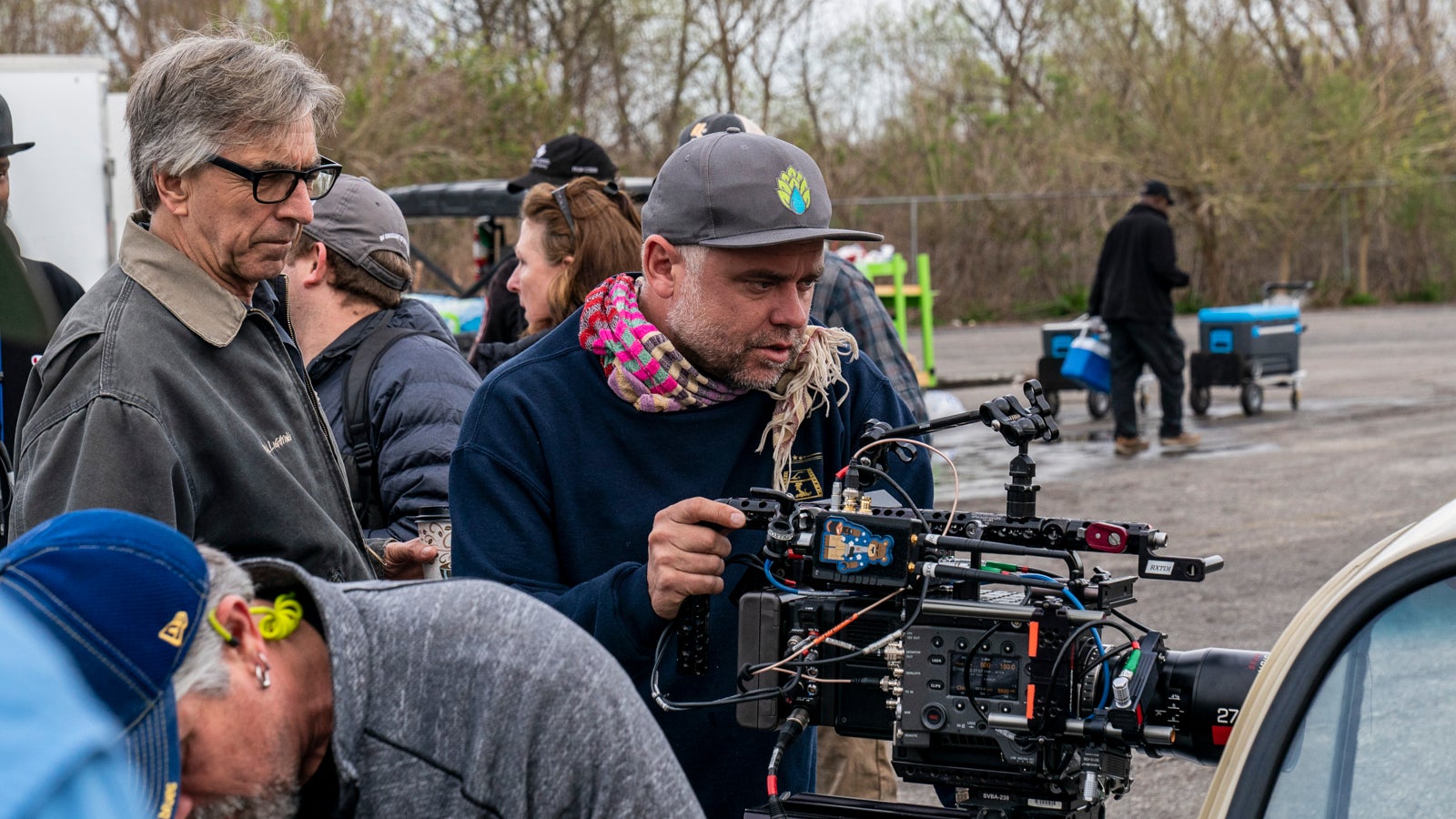
DP John Lindley, ASC, left, lines up a shot

Dinner scene as described above




